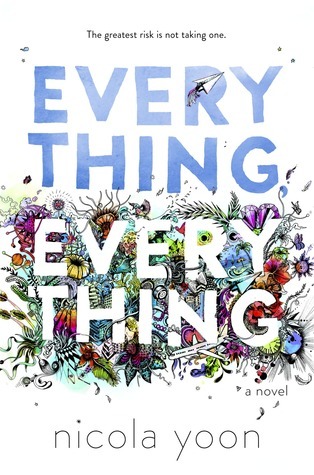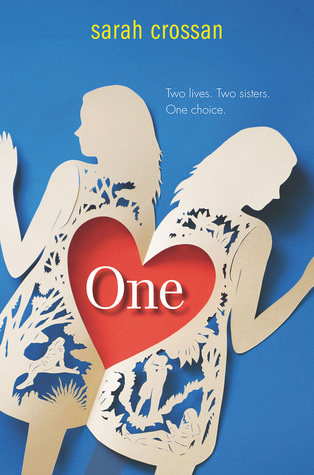Monday, April 24, 2017
Prompt Week 16
Both of our readings this week talk about the culture of reading and the future of the book. So I have two questions for you as readers, pulling on your own experiences and all of the readings we have done over the semester: First, how have reading and books changed since you were a child, for you specifically?
The biggest change I have seen for me personally, is the growth of Young Adult Fiction. When I "graduated" from the Children's Section of the library there wasn't a teen section. I moved straight from children's fiction to adult fiction. As an adult I really value the growth of this genre and what is provides for our youth.
Second, talk a little about what you see in the future for reading, books, or publishing - say 20 years from now. Will we read more or less, will our reading become more interactive? What will happen to traditional publishing? This is a very free-form question, feel free to wildly extrapolate or calmly state facts, as suits your mood!
I believe all reading will be done electronically for a couple of reasons. First, publishing books electronically and not on paper saves an immense amount of resources. This includes paper, energy and much more. Secondly, the transfer of data will be much more efficient, a book could go through the publishing process much quicker.
I can also see people that struggle with reading getting more assistance through audio and a learning/teaching feature opening up reading to many more people. I think technology will also allow books to be easily translated into other languages as well.
I could see the addition of virtual reality to reading making it an immersive experience. I think many readers would enjoy being able to experience the World of Harry Potter or Star Wars for instance. I look forward to seeing what the future brings to reading.
Prompt Week 15
What do you think are the best ways to market your library's fiction collection? Name and describe three ways you do or would like to market your library or your future library's fiction. These can be tools, programs, services, displays - anything that you see as getting the word out.
Social Media would be the first tool/program I would use. I think with today’s society it is important to have a presence on social media. I would like to post new additions to the library’s collection, reading lists that correspond with what is currently popular (such as TV shows or movies), advertise programs such as book clubs, and and promote seasonal reads. I would utilize, Twitter, Facebook, Instagram and Snapchat.
I would utilize displays to increase circulation of fiction books. I would primarily have themed displays that relate to the season, holidays, subgenres, TV shows and more. The display needs to be eye catching and constantly checked to see if additional books need to be added for patrons to check out.
I would also use programs to market my fiction collection. I would like to offer some themed book clubs, such as Mysteries, YA for Adults, Romance, and Book to Movie. I also think having some kind of program for when a much anticipated release comes out would be a good way to promote a part of the collection.
Sunday, April 16, 2017
Week 14 Prompt
Consider yourself part of the collection management committee of your local library, or a library at which you would like to work. You must decide whether or not to separate LGBTQ fiction and African American Fiction from the general collection to its own special place. Some patrons have requested this, yet many staff are uncomfortable with the idea - saying it promotes segregation and disrupts serendipitous discovery of an author who might be different from the reader. Do you separate them? Do you separate one and not the other? Why or why not? You must provide at least 3 reasons for or against your decision. Feel free to use outside sources - this is a weighty question that is answered differently in a lot of different libraries.
I made this decision for a couple of reasons.
- A label is never going to perfectly identify an object or person. The LGBTQ society is all about recognizing that people don’t always fit into the “norm”, so why should be try to label them?
- My second reason is that once you start labeling more specifically where do you decide to draw the line? I think labeling these sub-genres would open up many more issues in the library.
- A big theme in library studies is that a library or librarian does not censor. If we are separating these books from the general collection it feels like that is censorship.

Including these sub-genres in regular themed book displays is important as well. These genres will include themes such as romance, suspense, redemption and much more, so be sure to always try to include these in your choices.
This quote states it perfectly.
This article really fit this theme in my opinion and had a similar line of thinking.
Janice Pariat. "Why we don’t (and why we do) need a LGBTQ label for fiction." Scroll.in. 3 Jan. 2017. Web. 16 Apr. 2017.
Sunday, April 9, 2017
Week Thirteen Prompt - Adults Reading YA
Though this week's group of "genres" all seem very different, they all have in common the fact that many people don't feel that they are legitimate literary choices and libraries shouldn't be spending money on them or promoting them to adults. The common belief is that adults still don't or shouldn't read that stuff. How can we as librarians, work to ensure that we are able to serve adults who enjoy YA literature or graphic novels? Or should we?
I find this a very interesting topic, especially considering I primarily read YA Fiction.

There is a great article that was featured in The Guardian that also addresses this topic, I highly recommend it. The article also states “A survey in 2012 showed that 55% of YA readers are actually adults”. As I have taken classes for my degree in Library Science I have learned that I am definitely not the only adult that reads this genre and the article coincides with that thought. The article gives many reasons for why this genre is so popular for all ages.
I personally think the Harry Potter series attracted many adults to the genre to begin with, followed by the Hunger Games and Divergent. These stories all feature another world and allow the readers to use their imagination while reading. The storyline in all of these is also one of good vs. evil, a classic.
 Another reason that I believe this genre is more popular is because it doesn’t totally focus on sex or violence. These topics might be referenced or featured but it doesn’t consume the story or go into graphic detail. I believe more attention is given to the characters, story line and world building as a result making it so popular.
Another reason that I believe this genre is more popular is because it doesn’t totally focus on sex or violence. These topics might be referenced or featured but it doesn’t consume the story or go into graphic detail. I believe more attention is given to the characters, story line and world building as a result making it so popular.
I don’t think there is anything wrong with adults reading YA fiction, as long as they are reading. Everyone is entitled to their own preferences and that definitely should include choice of genre. During our studies this semester I have also seen book clubs focused on adults that read YA, and I know I would love to participate in one! Pinterest if full of recommendations for adults that enjoy YA!
Georgina Howlett (Britishbiblioholic). "Why are so many adults reading YA and teen fiction?." the Guardian. 24 Feb. 2015. Web. 9 Apr. 2017.
YA Annotation - Everything, Everything

Title: Everything, Everything
Author: Nicola Yoon
Publisher: Delacorte Books for Young Readers
Date Published: 9/01/2015
Setting: California & Hawaii
Pages: 310
Maddy hasn't been outside of her house in seventeen years because she has a very rare disease, SCID (Severe Combined Immunodeficiency). The only people she has any contact with are her Mother and her nurse, she handles this with ease until a family moves in next door. The family has two children, one of them is a handsome teenager named Olly. Maddy soon becomes obsessed watching him from her window, and they soon establish an online friendship. Maddy knows she is falling in love with him, but will she survive it?
 Young adult fiction is typically written for ages 12-18 and the main character will be within in that age range as well. This genre deals with contemporary issues and experiences while having characters that teens can relate to, and uses contemporary language. The issues faced in this book are lying, abuse, health, and parent relationships.
Young adult fiction is typically written for ages 12-18 and the main character will be within in that age range as well. This genre deals with contemporary issues and experiences while having characters that teens can relate to, and uses contemporary language. The issues faced in this book are lying, abuse, health, and parent relationships. I chose this book because I often feel like I am allergic to the outside world because of all my allergies and was able to empathize with the character. I like that the main character was an Afro-Asian girl, more books need to feature characters that represent the different ethnicities in our country. Based on the reviews I have read most people either love it or hate it. I don't hate the book but I also don't think it is very realistic.
I chose this book because I often feel like I am allergic to the outside world because of all my allergies and was able to empathize with the character. I like that the main character was an Afro-Asian girl, more books need to feature characters that represent the different ethnicities in our country. Based on the reviews I have read most people either love it or hate it. I don't hate the book but I also don't think it is very realistic.The book has been made into a movie and will be released May 19th. I am looking forward to the movie because Amandla Stenberg is playing Maddy, for those that don't know she played Rue in the Hunger Games. I can't wait to see how closely it follows the book.
Read Alikes:
The books all feature a character that deals with some type of illness.


These options feature multi-racial characters. Everything, Everything does not focus on the fact that the main character is multi-racial; however, I feel that it is important to promote these books.
Sunday, April 2, 2017
Readers Advisory Matrix - Primates: The Fearless Science of Jane Goodall, Dian Fossey, and Birute Galdikas
Readers Advisory Matrix - Primates: The Fearless Science of Jane Goodall, Dian Fossey, and Birute Galdikas
- Where is the book on the narrative continuum? This is a graphic novel and reads like narrative nonfiction.
- What is the subject of the book? The book looks at the study of primates and three female scientists that made major breakthroughs in this area.
- What type of book is it? Graphic narrative nonfiction novel
- Articulate Appeal
- What is the pacing of the book? The pacing is quick, this might be in part due to it being a graphic novel.
- Describe the characters of the book. The story focuses on Dian Fossey, Jane Goodall and Birute Galdikas and how they ended up in the field studying primates. All three of the women had many things in common. They were all very intelligent and dedicated to their work.
- How does the story feel? Though these ladies experienced many trials and tribulations during their time the story focuses on the good.
- What is the intent of the author? To educate about the breakthroughs these women made in their field.
- What is the focus of the story? Louis Leakey found these women and helped secure funding for their research, he was positive that women would make greater strides with primates than men, Goodall studies chimps, Fossey studied gorillas and Galdikas studies orangutans.
- Does the language matter? Yes, it is written in language everyone can understand. As an introductory book on the topic, it is important that a layperson be able to understand the words used.
- Are there details and, if so, of what? There are details about how each scientist worked hard to get close to the different kind of primates, their habitats and their discoveries.
- Are there sufficient charts and other graphic materials? Are they useful and clear? It is a graphic novel so there are plenty of pictures, there aren’t any charts to support the story.
- Does the book stress moments of learning, understanding and experience? The book focuses on these three things and on the breakthroughs the women made in the study of primates.
- Why would a reader enjoy this book.
- Rate appeal.
- Great graphics
- Good story
- Educational
Subscribe to:
Posts (Atom)
Novels in Verse in 5th Grade - Starfish & A Work in Progress
It's been awhile since I have posted anything. However, being back in the classroom has inspired me to post about the books I am using ...

-
Author: Guillermo Del Toro and Chuck Hogan Title: The Strain Genre: Horror Publication Date: June 2, 2009 Number of Pages: ...
-
I enjoyed this book and will be reading the next book in the series. It did take me a little bit to really get hooked on the story tho...
-
Title: The Revenant Author: Michael Punke Publisher: Picador Date Published: January 6th, 2015 Pages: 272 Time Period: 1820s The Reve...

